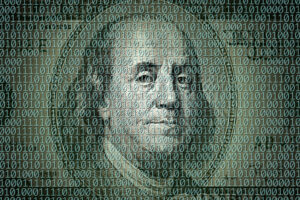This article is the second in a series reviewing recent regulatory developments related to cryptoasset-related issues in the banking sector. The previous article on a potential U.S. central bank digital currency is available here. The third article in the series will discuss the authority of banks to engage in cryptoasset-related activities.
Stablecoins are cryptoassets designed to have their value pegged to an external reference asset, such as a fiat currency. Many stablecoins are “minted” in exchange for fiat currency and are then backed by a variety of “reserve assets.” Some observers have questioned whether stablecoins are, in fact, stable. This question has led to a searching policy debate about how stablecoins should be regulated. This article briefly reviews that debate.
On November 1, 2021, the President’s Working Group (“PWG”), Federal Deposit Insurance Corporation (“FDIC”), and Office of the Comptroller of the Currency (“OCC”) issued a report on stablecoins (“PWG Report”), which focused specifically on fiat-pegged stablecoin arrangements with the potential to be used as a means of payment.[1]
The PWG Report recommended that Congress “promptly” pass legislation regulating such payment stablecoins. In the absence of congressional action, the report recommended the Financial Stability Oversight Council (“FSOC”) take action. The report identified prudential risks associated with payment stablecoin arrangements such as “run” risks, payment system risks, and financial stability risks. Further, the report noted various investor protection and illicit finance risks that may be implicated from stablecoin activities.
The PWG Report recommended legislation that, among other things, limits stablecoin issuance, redemption, and maintenance of reserve assets to insured depository institutions (“IDIs”); subjects custodial wallet providers to federal oversight and regulation; requires risk management standards for entities performing activities critical to the functioning of stablecoin arrangements; and addresses concerns of concentration of economic power by considering limits on payment stablecoin issuers’ and custodial wallet providers’ affiliation with commercial entities. The PWG Report’s recommendation to the FSOC, meanwhile, focused on the FSOC’s authority to designate systemically important payment, clearing, and settlement (“PCS”) activities under Title VIII of the Dodd-Frank Wall Street Reform and Consumer Protection Act. Designation would permit the establishment of risk-management standards for stablecoin activities, including requirements regarding reserve assets, the operation of the stablecoin arrangement, and “other prudential standards.” Financial institutions engaging in designated PCS activities would be subject to an examination and enforcement framework.[2]
Since the issuance of the PWG Report, several pieces of legislation have been proposed to regulate payment stablecoins, including possible alternatives to the regulatory framework outlined in the PWG Report.[3] Notably, limiting stablecoin issuers to be IDIs would require them to be subject to federal banking supervision and regulation at the issuing entity level by one of the OCC, Federal Reserve Board (“FRB”), or FDIC, and typically at the consolidated holding company level by the FRB. To date, most of the bills proposed would provide stablecoin issuers with additional licensing options. For example, in April 2022, Senator Pat Toomey (R-PA) released a discussion draft of the Stablecoin TRUST Act, which would allow institutions to be licensed as a money transmitting business, a national limited payment stablecoin issuer, or an IDI.[4] The Stablecoin TRUST Act would provide the OCC with the authority to license, supervise, examine and regulate national limited payment stablecoin issuers under a more tailored regulatory regime, limiting the OCC’s authority to regulations that cover: (1) capital requirements, not to exceed six months of operating expenses; (2) liquidity requirements; and (3) governance and risk-management requirements tailored to the business model and risk profile of the issuers. IDIs would have the option to segregate payment stablecoin issuances and reserves from their other activities like lending. Any IDI that chooses to segregate its stablecoin activities would benefit from the same regulatory standards as national limited payment stablecoin issuers. The bill would require stablecoin issuers to maintain assets with a market value equal to at least 100% of the outstanding value of the stablecoins.
More recently, Senators Cynthia Lummis (R-WY) and Kirsten Gillibrand (D-NY) introduced the Lummis-Gillibrand Responsible Financial Innovation Act. The bipartisan bill aims to empower various agencies with responsibility for regulating cryptoassets and also contains stablecoin provisions that hit on many of the same themes covered in the Stablecoin TRUST Act. Among other things, the Lummis-Gillibrand Responsible Financial Innovation Act would permit IDIs, limited purpose trust companies, and non-depository payment stablecoin issuers operating under a state or federal charter or license to issue, redeem, and conduct incidental activities related to stablecoins, provided they follow the requirements set forth in the bill, including maintaining liquid asset reserves valued at 100% or greater of the value of outstanding stablecoins and redeeming stablecoins at par in legal tender. Stablecoin issuers operating under a new national limited purpose trust charter would be restricted from engaging in activities like lending, but would benefit from a more tailored regulatory regime, including a simplified capital framework, appropriate standards for a community contribution plan, tailored recovery and resolution plan, and tailored holding company supervision.
Other key issues covered in the Stablecoin TRUST Act, the Lummis-Gillibrand Responsible Financial Innovation Act, and other stablecoin bills proposed to date include reporting, disclosure and audit, Bank Secrecy Act/anti-money laundering (“BSA/AML”), insolvency treatment, federal deposit or similar insurance, access to Federal Reserve accounts and services, and the scope of how “stablecoin” or “payment stablecoin” is defined. An overview of various legislative proposals is included in the Appendix.
Stablecoin issuers currently may operate under charters or licenses issued at the state level. For example, the New York Department of Financial Services (“NYDFS”) permits licensed virtual currency businesses (“BitLicensees”) and New York limited purpose trust companies to issue stablecoins with NYDFS approval. The NYDFS recently issued guidance on stablecoins emphasizing certain requirements, including that the market value of the assets backing the stablecoin must be equal to or greater than the nominal value of all outstanding units of the stablecoin at the end of each business day, the assets in the reserve backing the stablecoin must be separated from the proprietary assets of the issuer and held by FDIC -insured state or federally chartered institutions or by asset custodians approved by NYDFS, and issuers must have “timely” redemption policies in writing (approved in advance by the NYDFS).[5] The NYDFS also requires monthly and annual examinations of management attestations by an independent Certified Public Accountant (CPA).
As stablecoins have become more popular, they have faced increasing scrutiny from policymakers. This scrutiny is illustrated by the PWG Report, proposed legislation, and state regulatory actions. It seems almost certain that the focus on and policy activity regarding stablecoins will continue.
Report On Stablecoins, President’s Working Group on Financial Markets, the Federal Deposit Insurance Corporation, and the Office of the Comptroller of the Currency (November 2021). ↑
See, Federal Regulators Recommend Bank Regulation for Stablecoins, Cravath, Swaine & Moore client memo (November 2, 2021). ↑
See, e.g., Stablecoin TRUST Act of 2022 (Apr. 6, 2022); Lummis-Gillibrand Responsible Financial Innovation Act, S. 4356, 117th Cong. (2d Sess. 2021); Stablecoin Innovation and Protection Act of 2022 (draft of Feb. 14, 2022); Stablecoin Transparency Act, S. 3970, 117th Cong. (2nd Sess. 2022); Digital Asset Market Structure and Investor Protection Act, H.R. 4741, 117th Cong. (1st Sess. 2021); and Stablecoin Classification and Regulation Act, H.R. 8827, 116th Cong. (2nd Sess. 2020). ↑
See, Summary of the Stablecoin TRUST Act of 2022, Cravath, Swaine & Moore client memo (April 18, 2022). ↑
New York Department of Financial Services, Virtual Currency Guidance (June 8, 2022). ↑
Appendix
Summary Chart re: Proposed/Pending Stablecoin Legislation and Recommendations
This summary chart shows how key policy choices are addressed in various proposals to regulate stablecoins. As the policy debate continues, these issues likely will be among the key points that are addressed and negotiated. As a result, this summary chart demonstrates possible alternatives for stablecoin regulation, including how “stablecoin” is defined. The proposals in some cases may include internal inconsistencies or ambiguities that may be resolved as the drafts are further developed.






